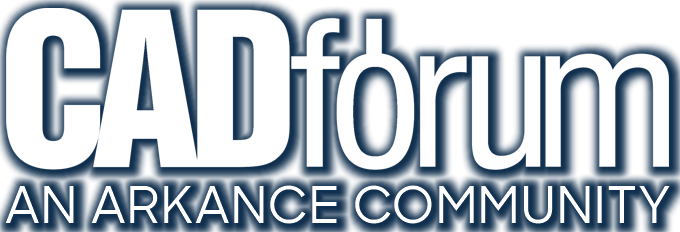As I mentioned in a previous blog post, the Resilient by Design | Bay Area Challenge is supported by the Autodesk Foundation. In May 2017, the Bay Area Challenge launched with a regional call to action to proactively plan for sea level rise and climate change impacts through collaboration and innovation. Last fall the organization visited sites vulnerable to sea level rise around the region, and this spring, they worked collaboratively with local stakeholders at sites around our bay on resilient design ideas to address our climate future.
Through this challenge, the members learned that communities have many types of resilience, and that sea level rise planning must tap into that existing knowledge within the community. They've heard that the region is ready to think collectively about these complex issues, yet everyone needs to work together more closely than ever have to meet the coming challenges. The members are grateful to all who participated and remain committed to accelerating the regional momentum generated by the Bay Area Challenge to ensure a lasting resilient future for all Bay Area residents.
The culmination of the Resilient by Design | Bay Area Challenge was held at Rock Wall Wine Company on May 18. This event took place in a former airplane hanger on Alameda Point that has been repurposed for local wine-making. This spacious venue allowed the organizers to display the boards and models that highlighted the collective efforts of the challenge.
The Summit began with World Cafe-style conversations, where we had small group/table conversations around key themes that highlighted:
- Key challenges and lessons learned,
- Contributions of the designs, and
- Actionable next steps at the local and regional levels and beyond.
The organizers identified key themes at the launch of the Challenge last May:
- Environment/Ecosystems
- Social Resilience and Environmental Justice
- Infrastructure/Transportation
The projects included:
 |
The South Bay Sponge is a design framework for adaptation¬†‚ÄĒ¬†for adapting our shoreline and infrastructure and for advancing our methods of planning, design,¬†and cooperation to achieve new and resilient forms of settlement on the bay. |
 |
The Grand Bayway: State Highway 37, a low-lying commute route that skirts the northern edge of San Pablo Bay, is both traffic-choked and increasingly flooded due to sea level rise. Sitting atop a precarious levee that confines an immense but compromised marsh complex, the highway has the dubious distinction of constricting both traffic and tidal flows. The project considers a new future for this highway as an elevated scenic byway, creating an iconic "front door" to a vast ecological open space previously known to few. Accessible to bikes, runners, kayaks, campers, and fishermen, the Grand Bayway will become a Central Park for more 21st century sensibilities in rapidly expanding North Bay communities. |
 |
The suite of sea level rise projects in North Richmond, ouR-HOME emerges from the community's ideas for building health, wealth, and homeownership for over 5,000¬†North Richmond residents¬†‚ÄĒ¬†turning investments in sea level rise adaptations and aging infrastructure into opportunities for all. |
 |
Estuary Commons creates a network of public spaces, adapts ecological systems, and strengthens social and economic relationships for a future of community-driven resilience. Through the construction of ponds, landforms, and expanded streams, the communities of Deep East Oakland, Alameda, and San Leandro will not only be able to adapt to sea-level rise and groundwater flooding but will also have a network of flourishing greenways to enjoy for generations to come. |
 |
Collect & Connect¬†‚ÄĒ¬†Resilient South City is a proposal to create more public green space and continuous public access along South¬†San¬†Francisco's Colma Creek, aiming to reduce the impacts of flooding, mitigate against sea-level rise vulnerability, restore native flora and fauna, and create more amenity and healthy lifestyle opportunities by connecting a continuous public corridor from Orange Memorial Park to a new public park at the shoreline. |
 |
Public sediment for Alameda Creek aims to reconnect sediment flows from Alameda Creek to the marshes and mudflats at the bay’s edge, creating a protective ecological infrastructure that adapts to sea level rise. The project provides a sustainable supply of sediment to bay marshes and mudflats for sea level rise adaptation, reconnects migratory fish with their historic spawning grounds, and introduces a network of community spaces that reclaim the creek as a place for people, building an ethos and awareness around our public sediment resources. |
 |
The big + one + Sherwood team's vision for Southeastern San Francisco is Islais Hyper-Creek, a restoration of the area's underlying natural watershed as a major new park. Addressing risk from coastal and stormwater flooding, Islais Hyper-Creek serves as an opportunity to bring the existing industrial ecosystem into the next economy. |
 |
Designing Our Own Solutions: The Permaculture and Social Equity Team proposed a social design process to build community capacity in leading the challenges of coastal adaptation and resiliency planning. The team was invited to implement their process in Marin City by Shore Up Marin, an environmental justice, and resiliency planning organization. Out of the process grew a capacity building program, resulting in an inspiring People's Plan to authentically reflect the aspirations and intentions of the resident community. An intergenerational cohort expanded existing knowledge for assessing and addressing risks, developing near and long-term strategies with a prioritized set of projects to be partially implemented as early as this summer. |
 |
Elevate San Rafael: Lifting all aspects of life for the city and strengthening a nexus of the Bay Area metropolis. The project is a new paradigm for responding to complex environmental change and simply what needs to be done: occupy higher elevations and raise the quality of life and social connection for everyone. |
Attendees started by viewing the projects:











 
This was followed by the keynote:

Henk Ovink, Special Envoy for International Water Affairs, Kingdom of the Netherlands noted:
- World leaders agreed in Paris that the average temperature of the earth should not rise more than 1.5 degrees or small islands will disappear due to sea level rise. We are on track for a 4-degree increase.
- California is the 5th largest economy in the world. If any region can mitigate the effects of climate change, it's the San Francisco Bay Area.
- The complexity of climate change provides ample opportunity for innovation, and with the Bay Area having access to the greatest minds in the world, the possibilities are endless.
We then grouped into tables. Each table had a host that helped facilitate and guide the conversation, and we used the design concepts and ideas that emerged from the Resilient by Design | Bay Area Challenge as our inspiration for the discussions. Our host was Tian Feng, District Architect for San Francisco Bay Area Rapid Transit (BART). The discussion at our table revealed:
- Even if cities like Alameda erected physical barriers to thwart sea level rise, the rising water causes water tables to also rise. Even today, basements in Alameda are flooding. Homeowners are buying pumps to empty their basements.
- Sea level rise is a regional problem, yet getting different government entities, like departments in different cities to cooperate, is nearly impossible. In fact, in terms of degree of difficulty of addressing climate change, the most difficult is obtaining funding. The second is collaboration across agencies. Designing and building solutions did not even make the list. Table participants told me "Thank you, Autodesk."
- Addressing climate change should be handled in the same way that watersheds are handled¬†‚ÄĒ¬†joint efforts across multiple municipalities.
- Q: Why should the government do anything? Why isn't sea level rise like earthquakes and fires? Individuals are expected to address those threats on their own by making preparations and having insurance, so why not treat climate change in the same way?
A: Solving the problem at the government level instead of the individual level provides economies of scale. In addition, citizens pay taxes and expect to get something in return, in this case, mitigation of the effects of climate change.
- Most climate change mitigation strategies include Hardening (physical environmental barriers), Adaption (working around the issues), and Retreat (moving to higher ground). A fourth strategy should be added: Avoidance (designating higher population density in areas of higher ground).
The summit culminated with an evening celebration where each team was recognized by the Resilient by Design Jury and regional leaders. This was everyone's chance to collectively celebrate all of the hard work, innovative ideas, and new partnerships emerging from this effort.
Resiliency is alive in the lab.  Go to the original post...
|
 Discussion forum
Discussion forum CAD discussion forum - ask any CAD-related questions here, share your CAD knowledge on AutoCAD, Inventor, Revit and other Autodesk software with your peers from all over the world. To start a new topic, choose an appropriate forum.
CAD discussion forum - ask any CAD-related questions here, share your CAD knowledge on AutoCAD, Inventor, Revit and other Autodesk software with your peers from all over the world. To start a new topic, choose an appropriate forum.



 Topic: Resilient by Design Bay Area Challenge
Topic: Resilient by Design Bay Area Challenge


![CAD Forum - tips, tricks, discussion and utilities for AutoCAD, Inventor, Revit and other Autodesk products [www.cadforum.cz] CAD Forum - tips, tricks, discussion and utilities for AutoCAD, Inventor, Revit and other Autodesk products [www.cadforum.cz]](/common/arkance_186.png)









 Resilient by Design Bay Area Challenge
Resilient by Design Bay Area Challenge Topic Options
Topic Options


